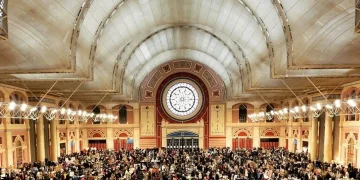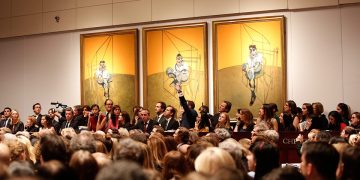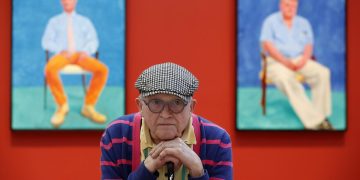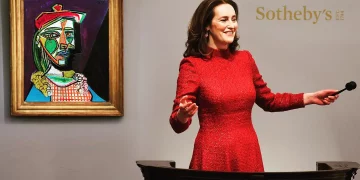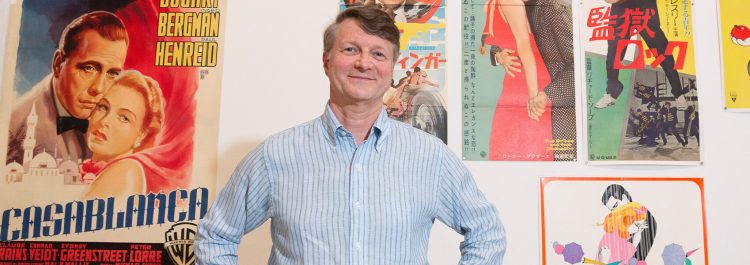The world of collecting has always been intertwined with history, culture, and a deep appreciation for craftsmanship. Renowned collectors have, for centuries, shaped and influenced the way society perceives art, antiques, rare books, memorabilia, and even natural history specimens. These individuals have not only amassed extraordinary collections but also established trends, created new market dynamics, and left an enduring legacy that continues to inspire collectors today. This article delves into the profound influence of legendary collectors, explores the latest updates regarding famous enthusiasts’ collections, and offers insight into how aspiring collectors can draw inspiration from these greats to navigate their own collecting journey. Additionally, we’ll examine how renowned collectors continue to impact the world of modern auctions and the broader market for rare and valuable items.
1. The Influence of Legendary Collectors on the Industry
Throughout history, certain collectors have been more than just passionate enthusiasts—they have been visionaries who shaped entire industries. Whether it’s art, coins, rare books, or sports memorabilia, legendary collectors have left an indelible mark on these sectors. One of the most notable examples is J. Paul Getty, an oil tycoon whose obsession with art led him to amass one of the world’s finest art collections. His acquisition of ancient Greek and Roman sculptures and Renaissance paintings set new standards for museums and private collectors alike. Getty’s legacy is not just in the objects he collected but in the way he revolutionized the art world, elevating the importance of preservation and scholarship alongside acquisition.
Similarly, in the world of rare books, individuals like Bill Gates have had a transformative impact. Gates’ purchase of the “Codex Leicester” by Leonardo da Vinci for $30.8 million in 1994 broke records and placed an emphasis on the value of rare manuscripts. His collection includes works that represent the intellectual history of humanity, and by showcasing such pieces in the public eye, Gates has brought a modern sensibility to the ancient art of book collecting.
In the realm of sports memorabilia, the late Michael Jordan has created a tremendous influence. As one of the greatest basketball players of all time, his name has become synonymous with both sports and the culture surrounding memorabilia. His famous “Air Jordan” brand, paired with rare autographed items from his career, has created a market that continues to thrive decades after his retirement. Jordan’s influence is still felt today as the prices for rare memorabilia from his career continue to soar.
These collectors, among many others, have shown how collecting can transcend mere possession. It becomes about curation, preservation, and, most importantly, setting trends that future generations will follow. Their legacies have turned collecting into an industry where passion, vision, and expertise converge, pushing the boundaries of what is valued and how it is appreciated.
2. Recent Updates on the Collections of Famous Enthusiasts
As time progresses, the collections of legendary enthusiasts continue to evolve, with many selling or bequeathing their prized items to museums, auction houses, or private collectors. In some cases, the collections themselves continue to gain in value, with each item telling a story of cultural and historical significance.
For instance, the collections of the late Paul Allen, co-founder of Microsoft, have made headlines in recent years. His extraordinary collection of classic cars, fine art, and musical instruments was auctioned off in a series of sales after his passing in 2018. The auction not only garnered staggering amounts of money but also revealed the remarkable breadth of Allen’s interests. The sale of his cars, including rare Ferrari models, set new auction records, proving how personal collections can influence the market and reassert the value of particular items.
Another iconic collection that continues to evolve is that of the late fashion mogul Karl Lagerfeld. His vast archive of art, fashion, and memorabilia, housed in his Parisian home, is being meticulously cataloged and prepared for sale to ensure his legacy lives on. The items he collected were deeply personal, often relating to his work as a designer, and offer a glimpse into the creative genius of one of the fashion world’s most influential figures. The ongoing sales of Lagerfeld’s pieces are shaping new conversations about the intersection of fashion and art and highlighting the importance of collectors in preserving cultural history.
Similarly, the auction house Sotheby’s continues to see extraordinary results from the sale of collections by famous enthusiasts, including the estate of Peggy and David Rockefeller. The Rockefeller collection, which includes exceptional pieces of furniture, paintings, and decorative arts, fetched over $800 million during a series of auctions. The sale of these objects showed how personal collections can achieve historical significance when curated with care and attention to cultural value.
These updates on the collections of famous enthusiasts highlight the continuing influence of legendary collectors. As their items find new homes and are passed down to future generations, their legacies are enriched, demonstrating that even after a collector’s passing, their contributions to the industry remain significant.

3. How Aspiring Collectors Can Find Inspiration from the Greats
For those looking to begin their own collecting journey, the examples set by legendary collectors are invaluable. Aspiring collectors can learn from these icons not only about the items they collect but about the philosophies they adopt when approaching their collections.
One key lesson is the importance of passion and knowledge. Legendary collectors like J. Paul Getty, Bill Gates, and Michael Jordan did not simply acquire items because they were valuable—they were deeply passionate about their respective fields. Aspiring collectors should take the time to educate themselves, immerse themselves in the history of their chosen area of interest, and develop a genuine appreciation for the subject matter. Whether it’s fine art, vintage watches, rare books, or sports memorabilia, a true collector is someone who seeks not just to own, but to understand and preserve the history of what they are collecting.
Another key piece of advice is the significance of patience and curation. Great collectors do not acquire items on impulse. They take the time to curate their collections thoughtfully and with a long-term vision in mind. Aspiring collectors should resist the urge to amass items quickly and instead focus on acquiring pieces that align with their personal tastes and values. Whether it’s acquiring a piece of art that complements an existing collection or finding a rare item that adds a unique layer to their assemblage, the goal should be to create something meaningful rather than simply increasing the number of items owned.
Aspiring collectors can also draw inspiration from the business acumen of legendary collectors. Many of these individuals were not only passionate but also shrewd in their ability to spot valuable items that would appreciate over time. Understanding the market dynamics of the collecting world—knowing when to buy, when to sell, and which items will retain or increase in value—is critical for anyone seeking to succeed in the industry. Aspiring collectors should consider seeking out experts, attending auction previews, and staying up-to-date with industry trends to gain insight into potential investment opportunities.
Finally, legendary collectors often operated with a sense of legacy in mind. Their collections were not only personal expressions of taste but also gifts to future generations. Aspiring collectors should think about the lasting impact of their own collections. What will they leave behind? What stories will their collections tell in the future? By considering these questions, aspiring collectors can approach their journey with a sense of purpose and legacy, ensuring that their collections are both valuable and meaningful for years to come.
4. The Lasting Impact of Renowned Collectors in Modern Auctions
The influence of legendary collectors continues to shape the auction world. Today, the impact of these individuals is evident in how auctions are conducted, what items are sought after, and how prices are determined. Auction houses like Sotheby’s, Christie’s, and Phillips often feature collections from famous enthusiasts, and their sales have become cultural events that attract collectors, investors, and art lovers from around the globe.
The rise in the popularity of auctions for rare and valuable items is in no small part due to the efforts of legendary collectors who set the precedent for the importance of these items. High-profile auctions such as the sale of the Rockefeller collection or the Paul Allen cars have captured the world’s attention, with record-breaking bids and media coverage sparking wider interest in the collecting world. These events have not only raised the profile of collecting as a cultural activity but have also turned auctions into global spectacles, where wealth, culture, and history intersect.
Moreover, the enduring popularity of these auctions shows how the impact of legendary collectors transcends time. The items they collected remain highly coveted, and as they continue to be passed through the auction block, their legacy grows. New generations of collectors are drawn to these items not just because of their monetary value but also because of the stories they represent. They seek to own a piece of history, and in doing so, they continue the legacy of those who came before them.
In conclusion, the influence of legendary collectors on the industry is undeniable. Their collections have set trends, shaped markets, and inspired generations of enthusiasts. Aspiring collectors can find much to learn from their examples, whether it’s about passion, knowledge, patience, or the long-term vision required to build a meaningful collection. And as these collectors continue to leave their mark on the world of auctions, their legacies ensure that the collecting world will continue to thrive for years to come.













